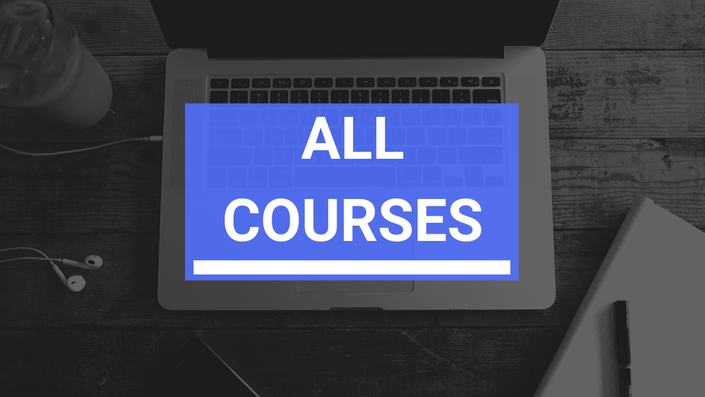Course Trailer
About this Course
📚 This CRE X.I - Reaction Mechanisms & Pathways course provides an in-depth exploration of the principles that govern chemical reactions at the molecular level. You will uncover how reaction mechanisms and pathways influence the transformation of reactants into products, driving innovation in chemical engineering and cross-disciplinary research. The course will help you understand the fundamental steps, intermediates, and energy profiles involved in chemical reactions, equipping you with the tools to design and optimize reactions for various industrial applications.
Key topics covered include:
- Introduction to Reaction Mechanisms and Pathways
- Elementary Reactions and Rate-Determining Steps
- Energy Diagrams and Reaction Coordinates
- Catalysis and its Role in Reaction Pathways
- Multi-Step Reactions and Complex Pathways
- Application of Reaction Mechanisms in Industrial and Research Settings
👨🏫 Designed for
Chemical engineers, researchers, and students interested in deepening their understanding of reaction mechanisms and pathways, with a focus on both theoretical principles and practical applications in industrial and research settings.
📚 Course Approach
This course offers a balance of theoretical knowledge and practical examples, using case studies and reaction analysis to demonstrate how molecular transformations drive innovation in chemical processes. You will be guided through various reaction mechanisms and pathways, learning how to optimize reactions for efficiency, selectivity, and sustainability.
🎯 By the end of the course, you will be able to:
- Understand the basic principles of reaction mechanisms and pathways
- Analyze elementary reactions and rate-determining steps in complex systems
- Interpret energy diagrams and reaction coordinates to optimize reaction conditions
- Apply knowledge of catalysis to enhance reaction pathways
- Design and optimize multi-step reactions for industrial and research purposes
🚀 Recommended for
Chemical engineers, research scientists, and advanced students who want to explore reaction mechanisms in detail and learn how to leverage this knowledge in chemical process design, optimization, and innovation.
✅ You’ll learn to:
- Identify and analyze the key steps in reaction mechanisms and pathways
- Understand the impact of molecular transformations on product formation
- Utilize energy diagrams and reaction coordinates for reaction optimization
- Apply catalysis principles to improve reaction efficiency and selectivity
- Use reaction mechanism knowledge to design novel chemical processes

Self-Paced, Dynamic Lectures
Learn at your own pace, anytime and anywhere.
The lectures are concise, engaging, and focused—designed to maximize your understanding efficiently.

Example Title
Use this block to showcase testimonials, features, categories, or more. Each column has its own individual text field. You can also leave the text blank to have it display nothing and just showcase an image.

Evaluations, Quizzes
Evaluate your progress through interactive quizzes and self-assessments.
Reinforce key concepts, identify gaps, and ensure you're ready to apply what you've learned in real scenarios.

30 Day Money-Back Warranty
Enroll with confidence—if the course doesn’t meet your expectations, you can request a full refund within 30 days.
No questions asked.

Certificate of Completion
Receive an official certificate or diploma once you finish the course—perfect for showcasing your new skills on your resume, LinkedIn, or job applications.

Instructor Support
Get guidance whenever you need it—ask questions, request feedback, and interact directly with the instructor throughout the course.
Curriculum
- Introduction to Section 1 (1:09)
- About Process Engineering Diagrams (4:22)
- Common Process Engineering Diagrams Used in the Industry (27:04)
- Common Project Documentation - List (4:12)
- Industry Codes, Standards & Regulations (3:48)
- Common Organizations Involved in Process Engineering Drawing (4:22)
- Industry Standards & Regulations: Examples (2:55)
- Software Tools for Engineering Diagrams (3:29)
- Evaluation 1 - Solved Section (5:36)
- Section 1 Closure (1:51)
- Introduction to Section 2 (0:32)
- Flow Diagrams (3:57)
- What is a Block Flow Diagram (BFD) (3:12)
- How to Read a Block Flow Diagram? (4:45)
- Ex. #1 Reading a BFD (4:28)
- Flexibility: Block Flow Diagram (7:34)
- Ex. #2 Reading a BFD: Petroleum Process (8:09)
- Components and Symbols in BFD (3:06)
- Ex. #3 Unkown Proces BFD (4:52)
- Ex. #4 Unkown Process BFD with AI (16:01)
- What is NOT a Block Flow Diagram? (5:17)
- Creating BFDs (2:50)
- Ex. #5 BFD Steam Reforming (10:34)
- Case Study #1: Steam Cracking Unit (13:03)
- Common BFD Drawing Software (7:19)
- Task #1 - Explore BFD Software (18:43)
- Homework #1 - Draw a BFD of the Steam Cracking Unit (0:52)
- What is a Flow Sheet, aka Process Flow Diagram? (9:46)
- Common PFD Rules (4:45)
- PFD: Common Symbols (3:21)
- Common PFD Software (13:53)
- Task #2 - Explore PFD Symbols in Software (11:25)
- BFD vs. PFD - What’s the difference? (3:49)
- Ex. #6 Let’s Identify PFD (7:39)
- Rules and Guidlines PFD (2:37)
- Ex. #7 Reading PFD Amine Absorption CO2 (7:08)
- Ex. #8 PFD Claus Process (3:48)
- Ex. #9 Reading PFD Gasoline Polymer (3:51)
- Drawing a Simple PFD (3:39)
- Case Study #2. Drawing a PFD for the Claus Process (14:55)
- Homework #2: Draw a PFD of the Haber Process (2:45)
- PFD Summary (2:11)
- Section 2 Closure (0:44)
- Evaluation 2
- Introduction to Section 3 (0:38)
- Introduction to P&ID (1:10)
- What is a P&ID? (3:58)
- Common Components of P&ID (6:46)
- Why Is It So Common in the Industry? (1:52)
- Main Characteristics (1:04)
- Let's Compare PFD vs. P&ID (5:18)
- AD - How to Read P&ID Course (1:08)
- Reading, Understanding & Creating P&ID (2:04)
- Reading P&ID (2:45)
- Detailed P&ID Elements: Documentation (1:58)
- Detailed P&ID Elements: Lines (2:40)
- Detailed P&ID Symbols: Equipment (1:46)
- Detailed P&ID Symbols: Valves (1:26)
- Detailed P&ID Symbols: Instrumentation (1:16)
- Detailed P&ID Symbols: Standards (1:19)
- Task #3 - Compare Standards (5:45)
- Ex. #11: Read a Simple P&ID (4:34)
- Ex. #12 Read a Simple P&ID with AI (8:02)
- Creating a P&ID (4:24)
- Ex. #13: Draw 3 Diagrams for a Vessel (5:20)
- Visio for P&ID (1:13)
- Ex. #14: Draw a P&ID for a Reactor with MS Visio (8:29)
- Case Study #3: Draw a P&ID for a Process (11:57)
- Overview: Instrumentation & Control (1:43)
- Instrumentation - Quick Overview (4:36)
- Control Topics - An Overview (7:57)
- Control Topics - Level Example (2:35)
- Instrumentation & Control for P&ID (1:35)
- Case Study #4: Drawing a P&ID for a Distillation Column (17:25)
- Section 3 Closure (0:32)
- Evaluation 3
Course Enrollment
This and all other courses are available only via the All Courses - One Subscription Membership.

Hi, I’m Emmanuel Ortega,
a.k.a. the Chemical Engineering Guy!
With five years in the chemical industry, from petrochemical plant design to polyester textiles, I bring real-world experience to show the true value of engineering knowledge.
My Expertise:
- Process Simulation & Optimization
- Chemical Process Design
- Process Equipment Design
- Automotive & Industrial Polyester Yarn Technologies
- Online Tutoring, Online Education Management
The Courses I design are entirely dynamic. You will see theory and then apply it ASAP to a real life problem! I even use the books you are using right now in your engineering courses...
I'll see you in class!
Frequently Asked Questions (FAQ)
- When does the course start and finish?
- The course starts now and never ends! It is a completely self-paced online course - you decide when you start and when you finish.
- How long do I have access to the course?
- *How does lifetime access sound? After enrolling, you have unlimited access to this course for as long as you like - across any and all devices you own.
- NOTE*: This is true as long as you keep your subscription active.
- What if I am unhappy with the course?
- We would never want you to be unhappy! If you are unsatisfied with your purchase, contact us in the first 30 days and we will give you a full refund.
- Will I Get a Certificate/Diploma of Completion?
- Yes! After the course, you will get a Certificate of Completion with a Diploma! You can use this in your Resume!
- Are Resources Downloadable?
- Absolutely YES! Every resource is available for download, allowing you to study alongside them.
- Any doubt? Message me!
- Please reach out! [email protected]





